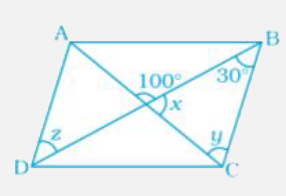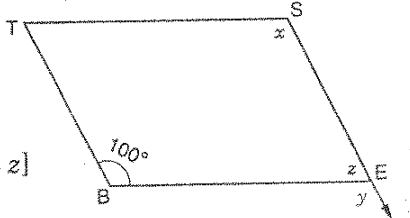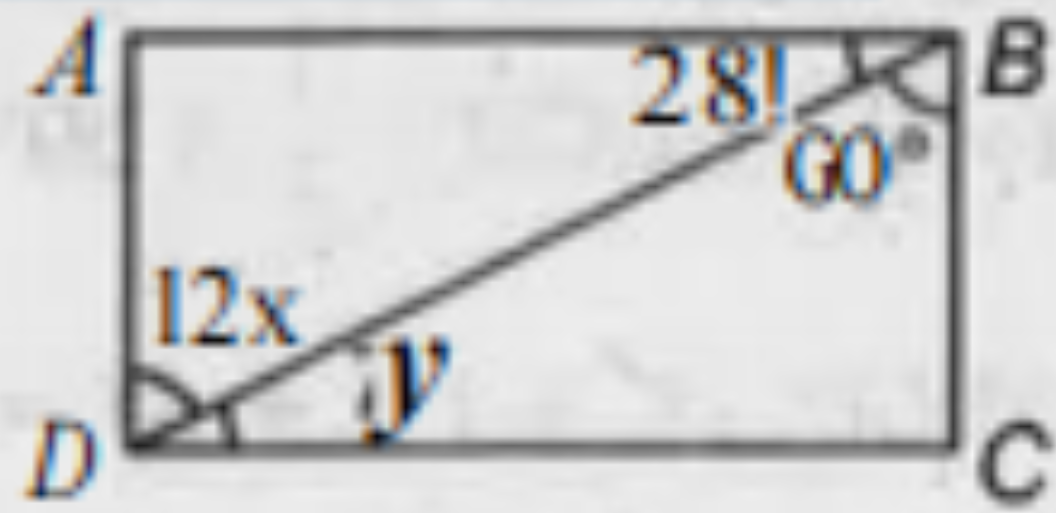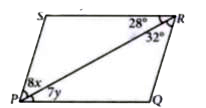In Fig 3.26, BEST is a parallelogram. Find the values x, y and z.
Video Solution
Text Solution
As, opposite angles of a parallelogram are always equal. So,
∠S=∠B⇒x=100∘
Also, sum of interior angles of a parallelogram is 180∘.
So, x+z=180∘⇒100∘+z=180∘⇒z=80∘
Now, y and z are supplementary angles as they are on a straight line.
So, y+z=180∘⇒y+80∘=180∘⇒y=100∘
|
Topper's Solved these Questions
- UNDERSTANDING QUADRILATERALSBook:NCERTChapter:UNDERSTANDING QUADRILATERALSExercise:EXERCISE 3.2
Explore 6 Videos
- UNDERSTANDING QUADRILATERALSBook:NCERTChapter:UNDERSTANDING QUADRILATERALSExercise:EXERCISE 3.3
Explore 11 Videos
- SQUARES AND SQUARE ROOTSBook:NCERTChapter:SQUARES AND SQUARE ROOTSExercise:EXERCISE 6.1
Explore 9 Videos
- VISUALISING SOLID SHAPESBook:NCERTChapter:VISUALISING SOLID SHAPESExercise:EXERCISE 10.3
Explore 8 Videos
Similar Questions
Find the value of x,y and z.

View SolutionABCD is a parallelogram. Find the value of x, y and z.

View SolutionFind the value of x, y and Z
View SolutionIn Figure, BEST is a parallelogram. Find the values of x, y and z.

View Solutionfind the value of x, y, z
View SolutionIf ABCD is a parallelogram, then find the values of x and y.

View SolutionIn the figure , ABCD is a parallelogram . Then find the value of x and y.

View SolutionPQRS is parallelogram find x,y,z
View SolutionIn Fig. 6.40, find the values of x, y and z.

View SolutionIn the given figure, If PQRS is a parallelogram, then find the values of x and y.

View Solution
